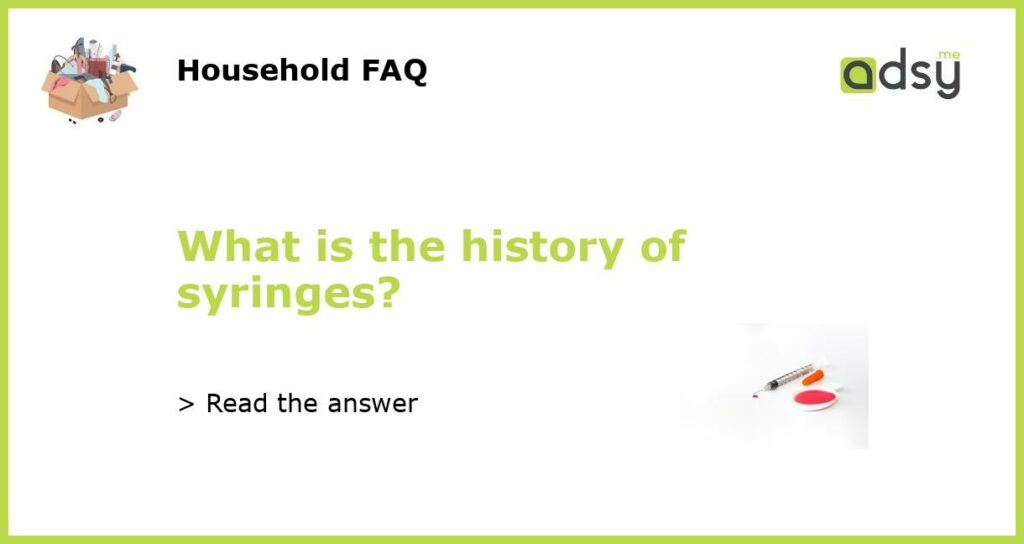The Ancient Origins of Syringes
Syringes may seem like a modern invention, but their history actually dates back thousands of years. Ancient civilizations, such as the Egyptians and the Romans, were using syringe-like devices as early as 1500 BC. These early versions were made from materials like hollow bird bones or bamboo, and were used for a variety of purposes, including injecting medicine and extracting fluids.
The Evolution of Syringes in the Middle Ages
During the Middle Ages, the design of syringes began to evolve. In Europe, glass syringes with metal plungers started to emerge. These new syringes allowed for more precise and controlled injections. The development of syringes coincided with advancements in medicine, particularly in the field of experimental surgery.
The Industrial Revolution and the Introduction of Hypodermic Syringes
The 19th century saw significant advancements in syringe technology, thanks to the Industrial Revolution. In 1853, French physician Charles Pravaz and Scottish surgeon Alexander Wood independently developed the first modern hypodermic syringe. These new syringes featured a hollow needle that could be inserted under the skin to deliver medication directly into the bloodstream.
Mass Production and Safety Improvements
By the late 19th century, the demand for syringes was increasing, and manufacturers began to mass-produce them. The introduction of sterilization techniques, such as steam sterilization and the use of disposable needles, helped improve the safety and reliability of syringes. These advancements made injections safer and reduced the risk of infection.
Modern Syringes and the Rise of Disposable Needles
In the mid-20th century, the use of disposable syringes and needles became more widespread. The development of plastics made it easier and cheaper to produce disposable syringes, which helped prevent the spread of diseases through contaminated needles. Today, syringes are a common medical device used for a wide range of purposes, from administering vaccines to delivering lifesaving medications.






